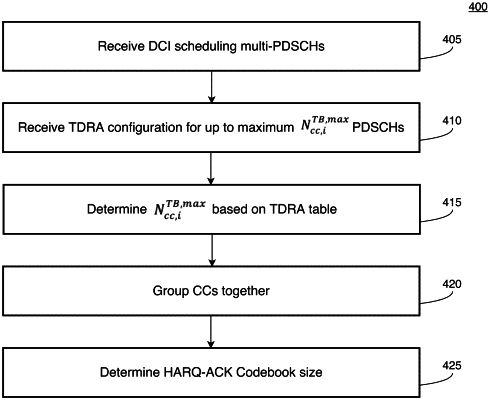| CPC H04L 1/1812 (2013.01) [H04L 5/001 (2013.01); H04W 72/23 (2023.01)] | 20 Claims |

|
1. A user equipment (UE), comprising:
a transceiver configured to communicate with a base station; and
a processor communicatively coupled to the transceiver and configured to perform operations comprising:
receiving a plurality of downlink control information (DCI) transmissions during a corresponding plurality of physical downlink control channel (PDCCH) monitoring occasions from the base station, wherein each DCI transmission schedules multiple physical downlink shared channel (PDSCH) transmissions on a corresponding one of a plurality of component carriers (CCs);
receiving a time domain resource allocation (TDRA) table configuration from the base station;
determining a maximum number of PDSCH transmissions per CC based on the TDRA table configuration;
grouping the plurality of CCs together, wherein CCs having the same maximum number of PDSCH transmissions per CC are grouped together, and wherein a maximum number of PDSCH transmissions per group is equivalent to the maximum number of PDSCH transmissions per CC;
determining a hybrid automatic repeat request (HARQ)-acknowledgement (ACK) codebook size based on a number of the multiple PDSCH transmissions, the maximum number of PDSCH transmissions, and a resulting ACK or negative acknowledgement (NACK) for each of the multiple PDSCH transmissions; and
generating a plurality of HARQ bits for each of the multiple PDSCH transmissions, wherein the plurality of HARQ bits is equal to the maximum number of PDSCH transmissions per group.
|